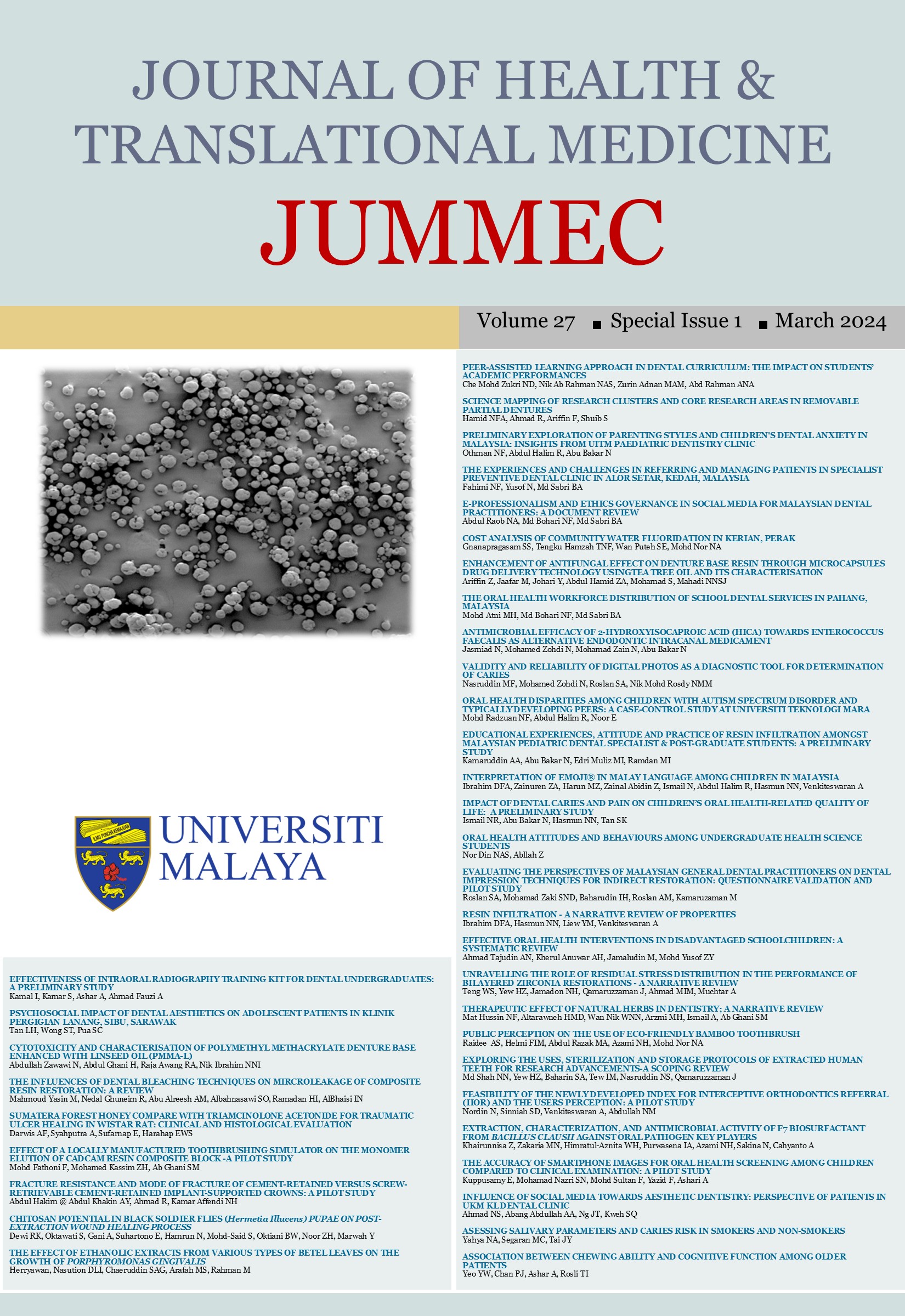FEASIBILITY OF THE NEWLY DEVELOPED INDEX FOR INTERCEPTIVE ORTHODONTICS REFERRAL (IIOR) AND THE USER'S PERCEPTION: A PILOT STUDY
Received 2024-02-21; Accepted 2024-03-22; Published 2024-03-25
DOI:
https://doi.org/10.22452/jummec.sp2024no1.23Abstract
Introduction: The Index for Interceptive Orthodontics Referral (IIOR), a tool designed to guide the timely referral of developing malocclusion was recently developed and validated. The IIOR may facilitate the timely identification and referral of cases that may benefit from interceptive orthodontics. This pilot study aimed to assess the feasibility of the IIOR and perception among its users.
Objectives: (1) To assess the feasibility of using IIOR among dental frontliners. (2) To investigate the perception of IIOR usage among dental frontliners.
Methodology: Thirteen participants (6 dental officers, 3 orthodontic postgraduate students, and 4 dental therapists) were briefed about the IIOR through a pre-recorded video presentation. Subsequently, the participants were asked to grade 10 study models with a case summary of each, using the IIOR. The participants' responses were compared to the grading by experts on the 10 study models of various malocclusion using IIOR, which was established before this pilot study. After grading, they were asked to complete a questionnaire that assessed their perception towards the IIOR, in an interactive method. The questionnaire had undergone content and face validation.
Results: The Fleiss Kappa scoring by the participants resulted in moderate agreement of 0.5. A total of 79.23% of participants matched the gold standard scoring. Additionally, 92.3% of the participants were happy to have a screening tool such as the IIOR to guide and assist them during patient screening. They found IIOR to be very useful, efficient, and easy to understand.
Conclusions: In this pilot study, the IIOR was found to be feasible to use and was highly accepted by the dental frontliners. The IIOR was found to be simple and convenient to use by the dental frontliners during dental screening.
Downloads
Downloads
Published
Issue
Section
License
All authors agree that the article, if editorially accepted for publication, shall be licensed under the Creative Commons Attribution License 4.0 to allow others to freely access, copy and use research provided the author is correctly attributed, unless otherwise stated. All articles are available online without charge or other barriers to access. However, anyone wishing to reproduce large quantities of an article (250+) should inform the publisher. Any opinion expressed in the articles are those of the authors and do not reflect that of the University of Malaya, 50603 Kuala Lumpur, Malaysia.


